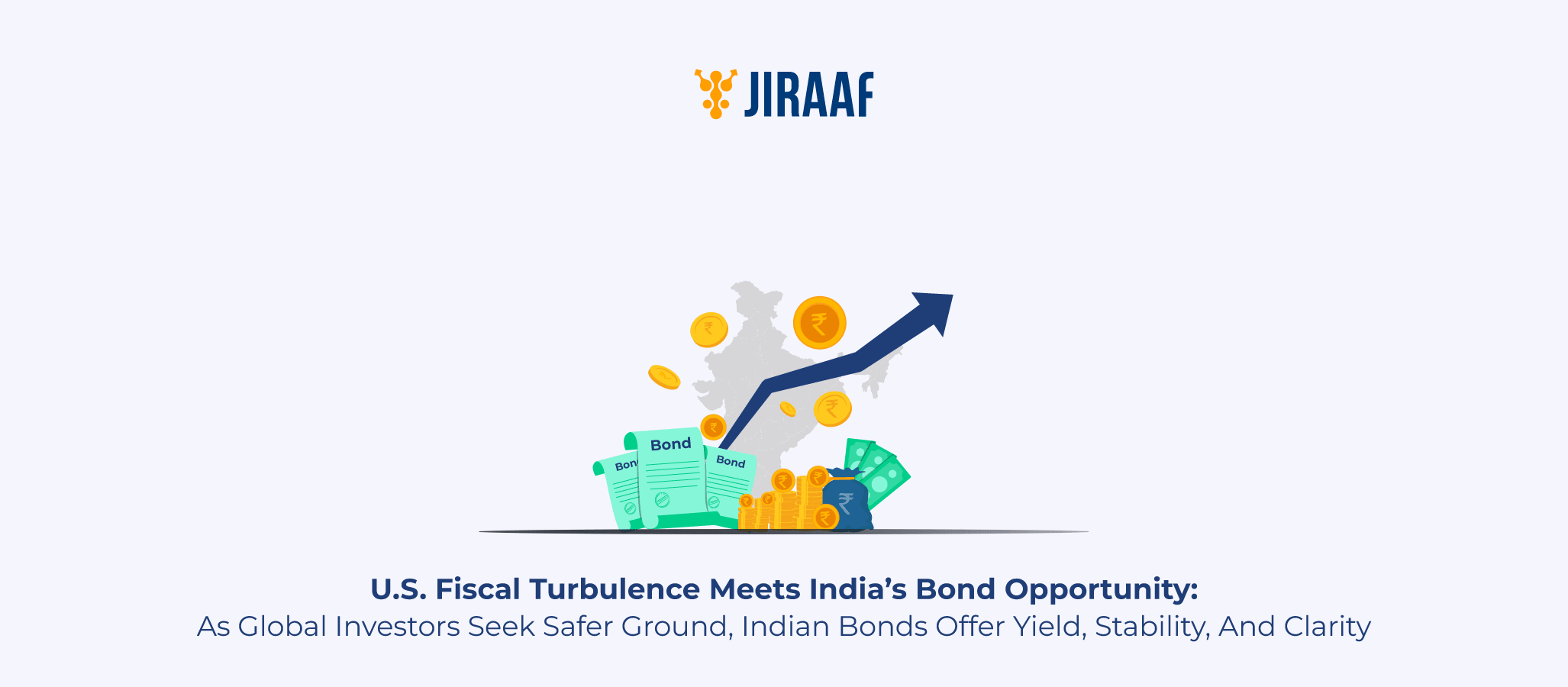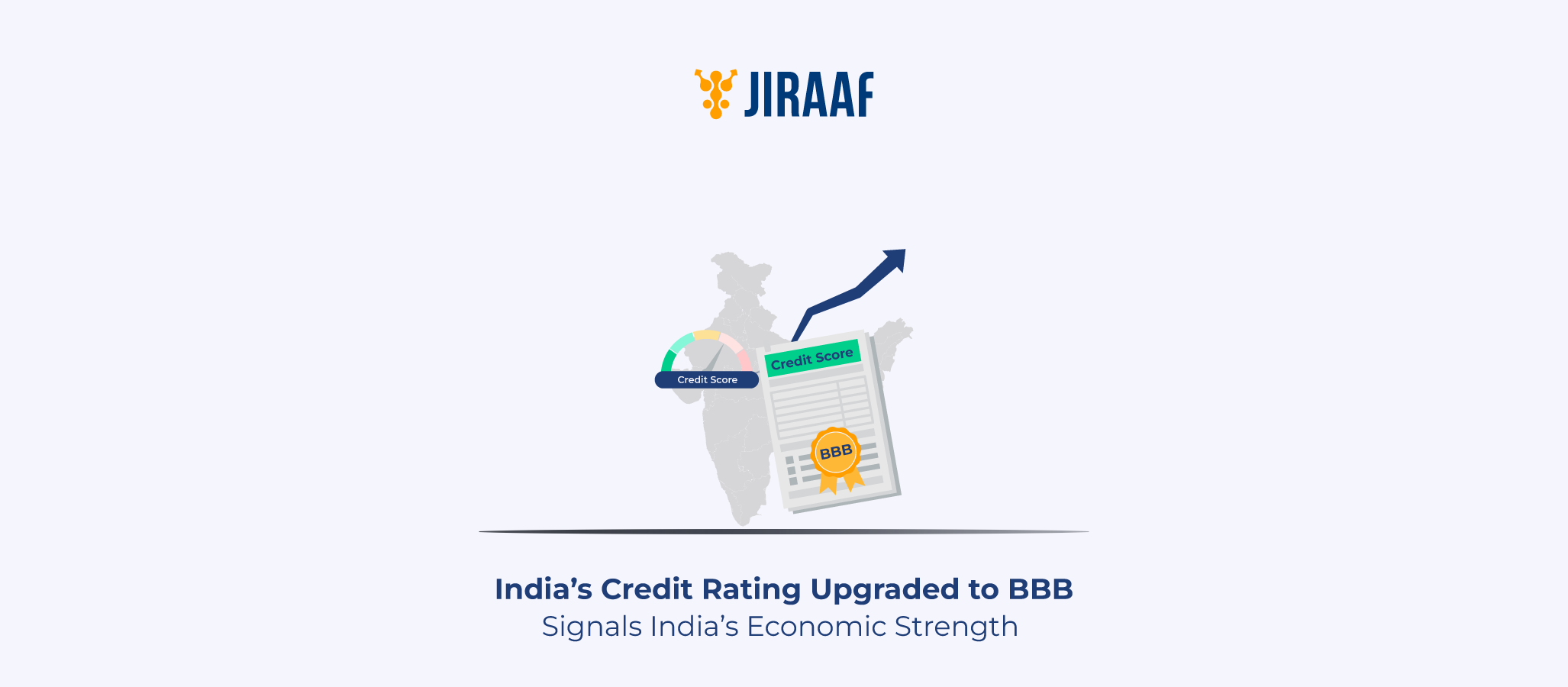When the world’s largest economy stumbles, global markets feel the tremors. But sometimes, that disturbance prompts a rebalancing—a shift toward stability, predictability, and clarity.
On July 4th, the U.S. enacted the so-called “One Big, Beautiful Bill”—a sweeping package of tax cuts and entitlement reforms that is already sending ripples through global debt markets. With little in the way of revenue offsets, the legislation is expected to significantly widen the U.S. fiscal crisis, pushing total federal debt to unprecedented levels.
Investors, asset managers, and central banks are closely monitoring the U.S. government’s path toward deeper deficits and potential delay in interest rate cuts due to persistent inflation. The resulting risk of prolonged high interest rates and refinancing stress in the treasury market is shifting global capital allocation patterns.
Amid this growing uncertainty, a different trend is quietly unfolding: the Indian bond market is emerging as a compelling alternative for foreign investors. With stronger macroeconomic fundamentals, positive real yields, and policy stability, Indian sovereign and corporate bonds are drawing fresh attention as global capital seeks more resilient fixed-income options.
As confidence in U.S. debt markets wavers, could global capital shift to India as investors move towards more stable and grounded destinations?
What Is the ‘One Big, Beautiful Bill’? And Why It’s Driving Market Anxiety
The passed ‘One Big, Beautiful Bill’, now an Act, is being hailed as a landmark U.S. tax reform 2025. It is a sweeping package that promises broad-based tax cuts for individuals and corporations. But there’s a catch: it lacks any significant revenue offsets.
Preliminary estimates suggest that the act could add $3–$ 3.3 trillion to the US federal deficit forecast over the next decade. With public debt already near $36–37 trillion by mid-2025, the fiscal trajectory has become even more concerning. While the bill may offer a short-term lift to household consumption and corporate earnings, the longer-term risks are pronounced. In a tight labour market, additional demand risks fuelling inflation, potentially forcing the Federal Reserve to extend its hawkish stance longer than previously anticipated.
The markets have already begun pricing in these risks, and the implications could extend well beyond U.S. borders.
Rising Treasury Yields: Why Global Bond Markets Are Rattled
In response to mounting fiscal stress, U.S. Treasury yields 2025 for 10-year and 30-year papers have surged to multi-year highs. This signals that investors are demanding greater compensation for credit and inflation risk.
A key concern is how the U.S. is financing this debt. An increasing share now comes from short-term Treasury bills, raising refinancing risks. If short-term rates stay elevated or turn volatile, the cost of rolling over this debt could become unsustainable.
Moreover, the interest rate outlook for the US looks bleak as the Federal Reserve’s anticipated rate cuts may now be postponed well into 2026. The “higher for longer” interest rate narrative is quickly becoming the new baseline, unsettling bond markets that are already stretched on valuation.
How the U.S. Debt Structure Today Echoes the Greek Crisis of 2009
There are some troubling parallels that echo past sovereign debt crises. In 2009, Greece faced a debt crisis triggered by excessive short-term borrowing to finance long-term obligations. As investor confidence eroded, yields spiked, and refinancing options became nearly impossible without a bailout.
The U.S., of course, is not Greece. It has far deeper capital markets and controls the world’s primary reserve currency, providing unmatched flexibility in managing its debt. Unlike Greece, which ceded monetary policy to the European Central Bank and couldn’t devalue its currency, the U.S. retains full control over both fiscal and monetary levers.
Still, the underlying pattern is disturbingly familiar: rising debt, weak fiscal discipline, and increasing reliance on short-term borrowing. Recent U.S. sovereign credit downgrades by Fitch (2023) and Moody’s have further dented confidence in U.S. Treasury bonds. While the U.S. economy remains dominant, these signals suggest its fiscal credibility can no longer be viewed as unquestionable.
If the U.S. eventually opts for dollar devaluation — a tool Greece didn’t have — it would mark a significant policy shift. The result could be a weaker currency, capital flight, and increased competition for funding from private borrowers. The U.S. Treasury, once considered the safest asset in the world, may no longer enjoy the same level of implicit trust.
Investor Confidence in Treasuries Is Being Tested
Foreign central banks and sovereign wealth funds—once steady buyers of U.S. debt—are gradually scaling back their exposure. China’s US bond holdings in 2025 are near multi-year lows; Japan, while still the largest holder, has become more cautious. Even oil-exporting economies in the Middle East are diversifying into other reserve assets.
This pullback is being driven by a combination of factors, including fiscal brinkmanship in Washington, concerns over dollar depreciation, and doubts about the long-term sustainability of U.S. debt.
The recurring impact of the US debt ceiling on markets has added to the unease. These episodes signal a deeper structural instability, leaving long-term institutional investors increasingly wary. The consequences are visible in a steepening yield curve, softening demand at long-dated Treasury auctions, and broader imbalances in global debt markets.
Why the Indian Bond Market Looks Relatively Attractive
In contrast to global volatility, India’s bond market presents a picture of stability and potential.
- Easing inflation, steady growth – CPI inflation has been moderating steadily, while GDP projections remain robust.
- Measured monetary policy – In 2025, the RBI delivered three rate cuts—two of 25 bps and one of 50 bps—amounting to a total easing of 100 bps. Each move was implemented cautiously, reinforcing the RBI’s reputation for prudent macroeconomic management.
- Positive real yields – Indian 10-year G-Secs continue to offer inflation-beating returns—an increasingly rare feature globally.
- Credible fiscal consolidation – The 2025 Union Budget reaffirmed the government’s path to deficit reduction while continuing to prioritize infrastructure investment.
Importantly, India has avoided excessive short-term borrowing for long-term spending, minimizing rollover risk. This combination of stable growth, anchored inflation, and disciplined policy makes India’s fixed-income assets increasingly attractive in a world seeking reliable yield.
Could Global Investors Rotate to the Indian Bond Market?
This shift may already be underway. India’s inclusion in the JP Morgan and Bloomberg Global Bond Indices is expected to attract $25–30 billion in inflows over the next 12 to 18 months, as passive and active investors increase their exposure to Indian sovereign debt.
Beyond index flows, India’s currency remains relatively stable, supported by strong foreign exchange reserves and prudent fiscal management. Regulatory transparency, tax predictability, and clearer settlement mechanisms have further bolstered India’s appeal to global investors.
Alongside sovereign bonds, investors are also beginning to explore India’s corporate bond market. High-rated issuers offer meaningful spreads over government securities, while investment-grade high-yield opportunities are attracting interest from yield-seeking institutional and HNI investors. The growth of regulated online bond platforms has further improved access, transparency, and participation, opening the door to a broader spectrum of investors, both domestic and global.
Why FPIs Are Now More Comfortable Navigating the Indian Bond Market
Since the announcement of index inclusion, foreign portfolio investors have already brought in over $10 billion. The on-ground experience for FPIs is steadily improving. Operational processes have become smoother, hedging options are more accessible, and transactional clarity around settlement and taxation continues to improve. As a result, global investors are showing greater comfort not just with India’s sovereign debt but also with its corporate bond market, where ratings and issuer quality have gained credibility.
Furthermore, India’s base of domestic institutional investors, including EPFO, insurers, and mutual funds, is expanding. This adds depth and resilience to the market, making Indian sovereign and investment-grade corporate bonds a firm consideration for global investors seeking diversified exposure with lower risk.
Implications for Indian Equities Amid Rising Global Yields
A word of caution is warranted. As global yields rise, equity markets—especially in emerging economies—can experience outflows.
In India, sectors with high leverage or capital-intensive models, such as infrastructure and utilities, could face margin pressure if borrowing costs increase. Export-oriented industries may also encounter currency-related challenges. While a stronger dollar typically boosts export earnings, foreign-currency cost mismatches—such as imported inputs or offshore debt—can compress margins.
That said, a deeper and more robust domestic bond market offers investors an alternative to equities. This adds balance to the capital market and supports the resilience of the financial system.
Final Thoughts: U.S. Fiscal Drift, India’s Opportunity
The United States is entering a phase of fiscal drift, characterized by rising deficits, persistent inflation, and policy gridlock. These dynamics are forcing investors to rethink traditional assumptions about safe-haven assets.
For India, this is a moment of opportunity.
As global investors reassess their fixed-income strategies, Indian bonds stand out for their yield, transparency, and relative stability. With prudent policymaking and increasing global integration, India is well-positioned to become a long-term destination for high-quality capital.
This could mark a turning point. If the Indian bond market can harness this momentum, it won’t just attract short-term inflows—it could establish itself as a credible and enduring pillar in the global fixed-income ecosystem.
For institutional investors seeking consistency and return, looking eastward might no longer be an option—it may be a necessity.









